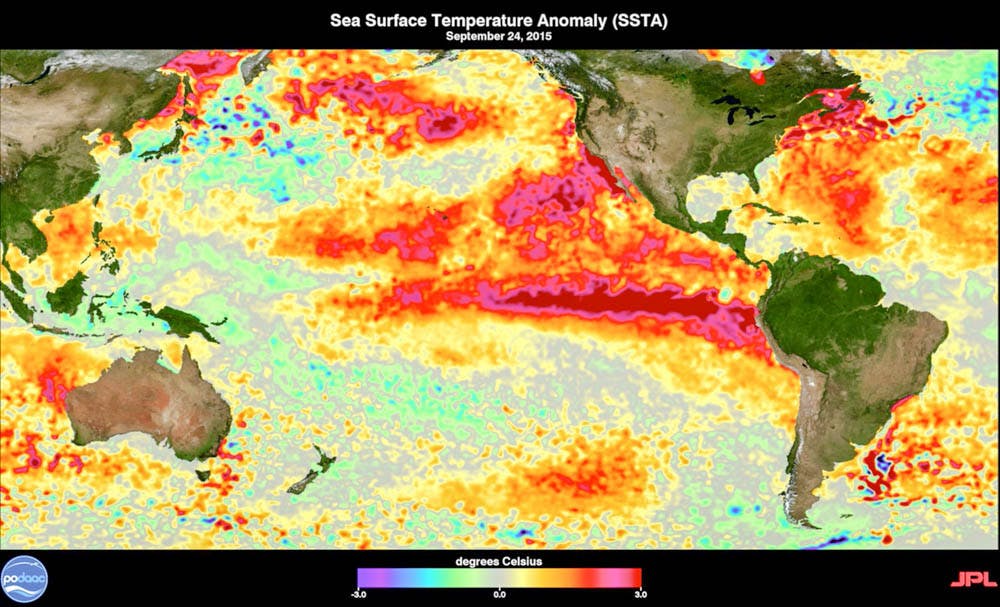During the weeks Professor of Physics Brad Marston was hiking the Pacific Crest Trail last year, he had ample time to contemplate the deflection of waves at the earth’s equator and the ways magnetic fields influence charged particles. “They both have a force that acts at right angles to the motions and makes circular trajectories,” he said. “I just had a feeling that there was a closer connection.”
Recent research by Marston and collaborators draws a novel parallel between physics and climate science: Waves in water and air propagating along the equator closely mimic the behavior of topological insulators — materials that allow electrons to flow along their surfaces but not within their interiors.
One of his collaborators in Lyon, France had observed similar patterns in the atmosphere, Marston said. These “ribbons of current” resembled the movement of electrons along the edges of topological insulators, he added. “The mathematics is basically the same.”
Some of these waves can be observed by tracking temperature changes as they migrate over the planet, said Antoine Venaille, physics researcher at the École Normale Supérieure de Lyon. El Niño, a pulse of warm water that moves periodically in the Pacific, illustrates this kind of progression. “It looks like the temperature anomaly cannot go into the North or into the South — it is really trapped,” Venaille added.
The waves the team examined act as a vital element of atmospheric dynamics in equatorial regions, Venaille said.
But “they were always kind of mysterious,” Marston said. Even this analysis uses simpler physics equations than Venaille originally had in mind.
“The model we use is extremely feeble,” said Pierre Delplace, another physics researcher at the École Normale Supérieure de Lyon. More realistic models could add complexity to better represent the reality of the movement, he added.
But there are other directions this research could take since this kind of wave movement is not confined to equatorial movements of water and air. These flowing patterns occur in many kinds of systems, according to M. Cristina Marchetti, associate director of the Syracuse Biomaterials Institute.
After hearing about this application of condensed matter physics to climate science, Marchetti began using the same type of equations to model movements of strikingly different scales in the biological realm, from bacteria moving along the curved surfaces of internal organs to the flocking of birds and fish. “There are similar phenomena that occur in large crowds,” she added.
Similar wave patterns may even be present on other planets or bodies in space, Venaille said. “There remains some mystery to be explained.”
Looking toward a future of climate change, such modeling could shed light on ways the earth will continue to develop. “A lot of attention is paid to how much the average temperature of the earth is going to increase, but what we really need to know is how regional climates are going to change,” Marston said.
Physics is well poised to inform climate science — the most interdisciplinary of the sciences, according to Marston. Numerous disciplines are woven into the complexity of the environment, ranging from geology and chemistry to math and physics.
“I like the interplay of the richness and chaos and order and disorder,” Marston said.





